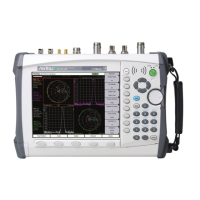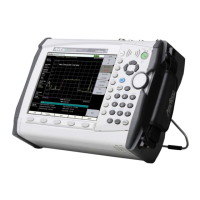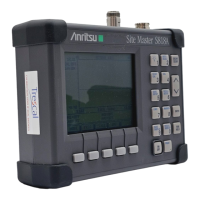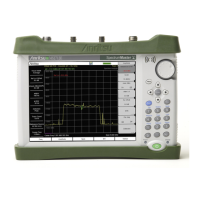1-10 ESD Caution General Information
1-10 PN: 10580-00305 Rev. L MS20xxC UG
1-10 ESD Caution
The VNA Master, like other high performance instruments, is susceptible to ESD
(electrostatic discharge) damage. Coaxial cables and antennas often build up a static charge,
which may damage the VNA Master input circuitry (if allowed to discharge by connecting
directly to the VNA Master without previously discharging the static charge). Operators
must be aware of the potential for ESD damage and take all necessary precautions.
Operators should exercise practices outlined within industry standards such as JEDEC-625
(EIA-625), MIL-HDBK-263, and MIL-STD-1686, which pertain to ESD and ESDS devices,
equipment, and practices. Because these apply to the VNA Master, Anritsu Company
recommends that any static charges that may be present be dissipated before connecting
coaxial cables or antennas to the VNA Master. This may be as simple as temporarily
attaching a short or load device to the cable or antenna prior to attaching to the VNA Master.
Remember that the operator may also carry a static charge that can cause damage. Following
the practices outlined in the above standards helps to ensure a safe environment for both
personnel and equipment.
1-11 RF Input Warning (MS203xC only)
The VNA Master is a sensitive measuring instrument designed to measure low power levels.
Avoid damaging this sensitive circuitry by observing the maximum input levels printed on
the instrument connector labeling and specified in the product technical data sheet.
On MS203xC instrument models, typical maximum input at the spectrum analyzer port is
+30 dBm (±50 VDC) and could be less if additional features, such as a preamplifier, are in
use. Be sure to review the product technical data sheet or Anritsu website for recommended
components and accessories that can help you protect your instrument. These include a
variety of adapters, attenuators, filters, and RF detection accessories.
Warning
VNA Masters are supplied with a rechargeable battery that could potentially leak
hazardous compounds into the environment. These hazardous compounds
present a risk of injury or loss due to exposure. Anritsu Company recommends
removing the battery for long-term storage of the instrument and storing the
battery in a leak-proof, plastic container. Follow the environmental storage
requirements specified in the product data sheet.

